37 F. high in the Twin Cities Monday.
24 F. average high on January 19.
39 F. high on January 19, 2014.
2″ snow on the ground at MSP International Airport.
January 19, 1982: Just over 17 inches of snow fell in the Twin Cities. Amazingly, it was to be outdone two days later.
January 19, 1917: 16 inches of snow falls in the Twin Cities.

“…But the fact is that all 15 years since the year 2000 have been among the top 20 warmest years ever recorded. The odds of this happening randomly, or as a part of natural variability? About 1.5 quadrillion to one...” – from a story at Forbes, details below.

Atmospheric Speed Bump
After a freak case of severe clear air turbulence over the Pacific 20 years ago my wife developed a formidable fear of flying. She’d grip the arm rest, close her eyes and grit her teeth. “Think of this as potholes in the sky” I whispered, trying to be helpful. I know, what a dork. “You don’t scream when you hit a pothole do you?”
Pilots are smart enough to detour around thunderstorms and avoid icing when possible. Want to live a long life? Don’t push the weather.
Variations in jet stream winds can create pockets of extreme turbulence, capable of severe injuries for people unlucky enough to be out of their seats or unbuckled. Airlines and universities are teaming up on promising technologies to pinpoint areas where conditions are most ripe for turbulence.
A scrawny Alberta Clipper may paint a few driveways white today and tonight; the pattern still not ripe for significant snow. If you’re keeping score MSP is running a 10-inch snowfall deficit, to date.
The Great Lakes and New England bear the brunt of arctic air the next 2 weeks. Mild Pacific air penetrates inland, keeping our temperatures from falling off a cliff.
Old Man Winter pulling his punch? No, this won’t be a rerun of 2014.
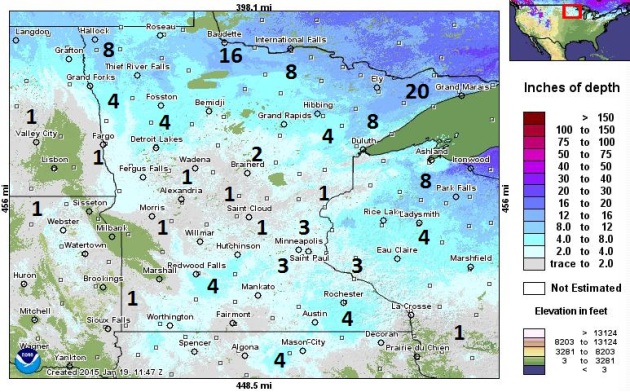
Nagging Snow Drought Central Minnesota. Latest data from NOAA NOHRSC shows an inch or so of snow on the ground from the far northern suburbs to St. Cloud, Brainerd, Wadena, Alexandria and Morris; virtually no snow on the ground near Marshall and Canby. Yes, this is a bit unusual for late January.

Nervous Farmers. I don’t blame them, with some of the wild swings in moisture and temperature we’ve seen in recent years. Weather has always been volatile, but the frequency and intensity of some of these extremes appear to be on the increase. Here’s an excerpt of an e-mail that came in yesterday from Greg Larson in Excelsior: “A couple of photos taken Sunday out in Meeker County where the snow cover has melted exposing the barren fields to severe wind erosion. The first picture is a drainage ditch running into the South Fork of the Crow River. All that black stuff (topsoil) will be washing downstream come spring melt into our lakes and rivers. The second photo shows the amount of soil blown off a neighbors field from the storm early this month. Usually the severest erosion happens in early spring. If there’s a drought in the near future and unless farmers start practicing soil stewardship we might be in for another dustbowl. These photos could have been taken anywhere in the plains states. Thought you’d be interested in seeing what’s happening in farm country and the impact of open fields, no snow and high winds.”
Regards,
Greg Larson, Excelsior
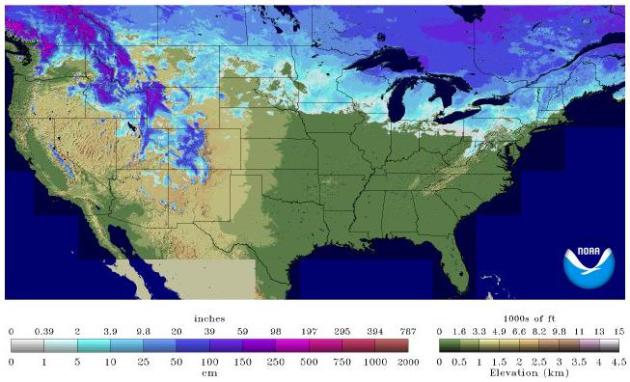
Where’s The Snow? The national snowcover map is a bit of a disconnect. On December 19, 2014 snow was covering 41.7% of the lower 48 states. As of yesterday, just one month later, that was down to 27% Map and data courtesy of NOAA.

Minor Clipping. The next swirl of low pressure racing southeast pushes a couple inches of snow across the Dakotas into central and southern Minnesota, brushing MSP with a coating to as much as an inch of slushy accumulation. With temperatures close to freezing many roads and freeways will be wet. 60-hour accumulated snowfall: NOAA NAM and Aeris Weather.

Snowfall Potential. A few towns near the Minnesota River may wind up with an inch or two of snow over the next 18 hours; closer to a coating to half an inch for the Twin Cities. Dribs and drabs. Remember when it really snowed? Source: Twin Cities National Weather Service.
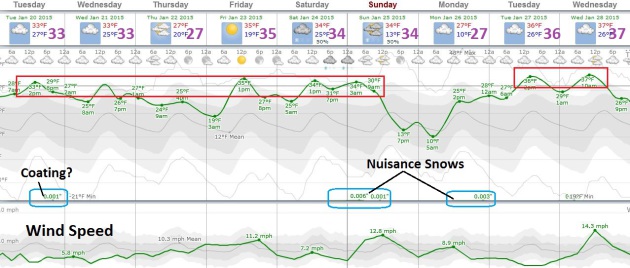
Above Average. European guidance shows temperatures averaging about 10F warmer than normal into the first half of next week; readings topping freezing the rule, rather than the exception. A coating to 1/2″ of snow may fall today (a little more south/west of the Twin Cities) with another chance of a nuisance snow Saturday night into Sunday. The outlook for the next 1-2 weeks shows a parade of clippers, but no major snowfalls. Source: Weatherspark.
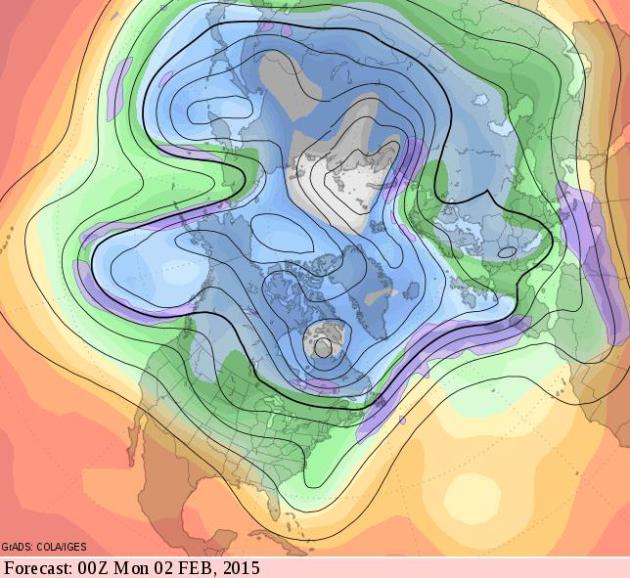
More Zonal Than Polar. Here is the GFS forecast of 500 mb winds (about 18,000 feet) for the evening of February 1, 2015. Prevailing winds aloft are howling from the west, implying moderate to mild temperatures across much of the USA and southern Canada. Map credit: GrADS:COLA/IGES.
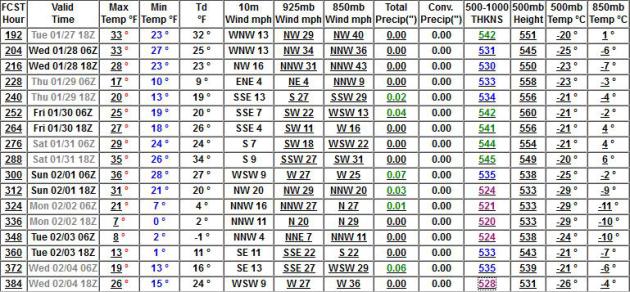
Not Exactly Polar. Minnesota will be grazed by puffs of arctic air, but the thrust of any cold waves will be aimed at the Great Lakes and New England – just a glancing blow of numb close to home. GFS extended data shows a brief hiccup of chilly weather for Groundhog Day on February 2, otherwise temperatures at or above average.
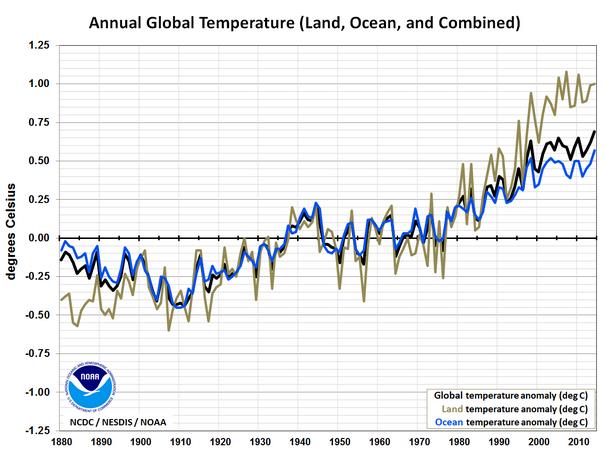
2014: Earth’s Warmest Year On Record. Here’s an excerpt of a long post at NOAA providing more detail on last week’s news:
- During 2014, the average temperature across global land and ocean surfaces was 1.24°F (0.69°C) above the 20th century average. This was the highest among all 135 years in the 1880–2014 record, surpassing the previous records of 2005 and 2010 by 0.07°F (0.04°C).
- Record warmth was spread around the world, including Far East Russia into western Alaska, the western United States, parts of interior South America, most of Europe stretching into northern Africa, parts of eastern and western coastal Australia, much of the northeastern Pacific around the Gulf of Alaska, the central to western equatorial Pacific, large swaths of northwestern and southeastern Atlantic, most of the Norwegian Sea, and parts of the central to southern Indian Ocean.


Ocean Life Faces Mass Extinction, Broad Study Says. O.K. Almost interesting, but please pass the sports section and hand me the remote control to change the channel. Alarmist? I hope so. Here’s the intro to a story at The New York Times: “A team of scientists, in a groundbreaking analysis of data from hundreds of sources, has concluded that humans are on the verge of causing unprecedented damage to the oceans and the animals living in them. “We may be sitting on a precipice of a major extinction event,” said Douglas J. McCauley, an ecologist at the University of California, Santa Barbara, and an author of the new research, which was published on Thursday in the journal Science. But there is still time to avert catastrophe, Dr. McCauley and his colleagues also found...” (File photo: NOAA).

AI Has Arrived, And That Really Worries The World’s Leading Minds. Beware smart robots, especially those that don’t have the latest ethics-chip upgrade. Here’s an excerpt from WIRED: “…Pledging not to build the Terminator is but one step. AI companies such as Google must think about the safety and legal liability of their self-driving cars, whether robots will put humans out of a job, and the unintended consequences of algorithms that would seem unfair to humans. Is it, for example, ethical for Amazon to sell products at one price to one community, while charging a different price to a second community? What safeguards are in place to prevent a trading algorithm from crashing the commodities markets? What will happen to the people who work as bus drivers in the age of self-driving vehicles?…”

Humanity Keeps Discovering Brilliant New Ways To Destroy Itself. Here’s an excerpt from a sobering story at Quartz: “It is not just nuclear weapons that threaten humanity. The Bulletin has in the past decade formally expanded its remit to include new threats to civilization, namely climate change and biological warfare. The magazine also informally looks at other threats, such as cyberwar that could spark real world confrontation; synthetic biology that could create new pandemics; and lethal autonomous weapons (or “killer robots”) that can target and fire without human intervention. The Bulletin also is beginning to look at artificial intelligence…”

Forget Myers-Briggs: To Build A Great Team Focus on “Factor C”. Here’s a clip from an interesting post at LinkedIn: “…Good players mesh. This observation may be a cliché, but it’s nevertheless important to keep in mind: personalities—not merely abilities—matter. In this regard, most people’s intuition, at least in Western cultures, would lead us to two conclusions. First, some personality types are far better than others (Bill Russell and Magic Johnson, as opposed to the early Michael Jordan). Second, successful groups have a good mixture of personality types…”
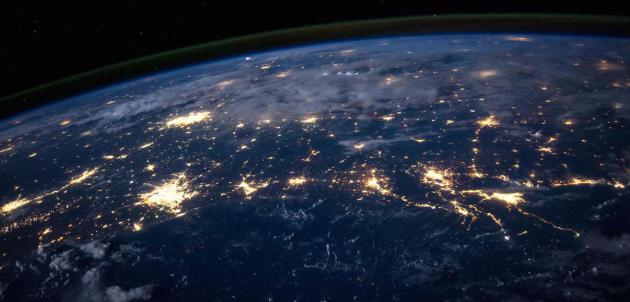
Cities On Earth Evolve In The Same Way As Galaxies In Space. Quartz has another fascinating article; here’s an excerpt: “…Scientists now think they have found the source for these scaling laws out in space. Henry Lin and Abraham Loeb at the Harvard-Smithsonian Centre for Astrophysics have used models for showing how galaxies evolve based on matter density to propose a unifying theory for scaling laws of human populations…” (Image: NASA, Flickr).
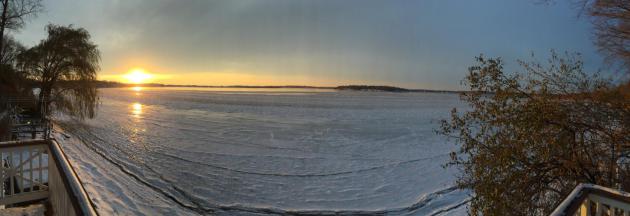
TODAY: Coating of light snow and flurries. Winds: NE 8+ High: 33
TUESDAY NIGHT: Flurries (heavier snow south/west of MSP). Low: 23
WEDNESDAY: Flurries taper, above average temps. High: 31
THURSDAY: Mostly cloudy and quiet. Cooler. Wake-up: 19. High: 27
FRIDAY: Another sloppy thaw. Mild breeze. Wake-up: 21. High: 37
SATURDAY: Leftover clouds, relatively mild. Wake-up: 28. High: 34
SUNDAY: Early coating, then colder. Wake-up: 25. High: 27
MONDAY: Clouds increase, few flurries. Wake-up: 14. High: 28
Climate Stories…



Scientists: Human Activity Has Pushed Earth Beyond Four of Nine “Planetary Boundaries”. The Washington Post has the grim details; here’s a clip: “At the rate things are going, the Earth in the coming decades could cease to be a “safe operating space” for human beings. That is the conclusion of a new paper published Thursday in the journal Science by 18 researchers trying to gauge the breaking points in the natural world. The paper contends that we have already crossed four “planetary boundaries.” They are the extinction rate; deforestation; the level of carbon dioxide in the atmosphere; and the flow of nitrogen and phosphorous (used on land as fertilizer) into the ocean…”

Scientists Drill Through 2,400 Feet Of Antarctic Ice For Climate Clues. How quickly will glaciers continue to melt, in light of rising air and sea temperatures? Here’s an excerpt of an interesting article at Scientific American: “Scientists have drilled into one of the most isolated depths in all of the world’s oceans: a hidden shore of Antarctica that sits under 740 meters of ice, hundreds of kilometers in from the sea edge of a major Antarctic ice shelf. Humans have never glimpsed this place; reaching it required seven years of planning and 450 tonnes of fuel and gear. But understanding what is happening down there, so far from human view, will be crucial for predicting the future fate of Antarctica’s ice sheets amid rising temperatures…”
Image credit above: “Pebbles just discovered under 730 meters of ice in Antarctica, where the bottoms of glaciers first touch the sea, could reveal clues as to how fast those glaciers could slide into the ocean, raising sea level.” Credit: Whillans Ice Stream Subglacial Access Research Drilling Project.
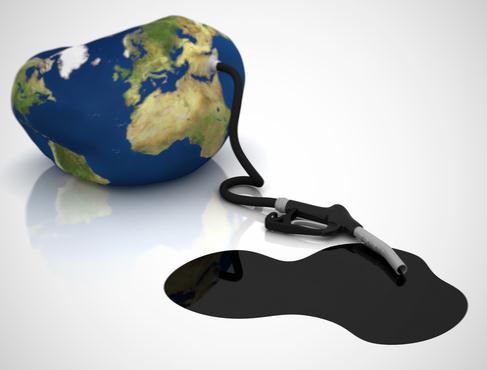
The Majority of Republicans Believe In Regulating Carbon Emissions. Set a price on excessive carbon pollution, as you would for any other pollutant, and let the markets come up with cost-effective solutions. Here’s a clip from Pacific Standard: “…By polling a wide range of Republicans—liberal leaning, moderate, conservative, and Tea Party members—researchers have shown that, overall, 56 percent of Republicans support regulating carbon dioxide as a pollutant. Predictably, the subdivided percentages reflect how far right each group leans: 71 percent of liberal Republicans and 74 percent of moderate Republicans believe carbon dioxide should be regulated, while only 54 percent of conservatives and 36 percent of Tea Party Republicans do…”

The End Of The Partisan Divide Over Climate Change. I want to be optimistic, but with the amount of money in play, the valuable carbon reserves still in the ground, I’m expecting more confusion, denial and rationalization for a fossil-fuels-as-usual economy. Here’s a clip from a story at Forbes: “…That’s precisely what the American Petroleum Institute did when it released its annual State of American Energy Report two weeks ago. Amid its bullish assessment of the nation’s ongoing boom in shale oil and gas, the leading fossil fuel trade group clearly and unequivocally acknowledged the threat of global warming, and highlighted — at some length — the steady rise of solar power as an encouraging sign…”

U.F. Professor Ties Global Warming to Wheat Decline. The Orlando Sentinel has the story – here’s the introduction: “Wheat crops could suffer badly as global temperature rise this century, according a new study led by a University of Florida scientist. Steering an international team of 50 scientists, UF professor Senthold Asseng determined that a global temperature rise of nearly 2 degrees will cause a 6 percent failure in world wheat production, according to a university announcement of the study Wednesday...”
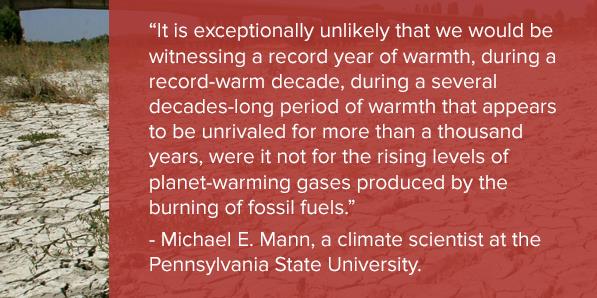

The Logic of Divestment: Why We Have To Kiss Off Big Carbon Now. Here’s a clip from RollingStone that got my attention: “…A 2013 study by the bank HSBC warned that between 40 and 60 percent of the market value of European fossil-fuel companies, like BP and Royal Dutch Shell, could be wiped out in a carbon-constrained world. This past October, the head of England’s central bank, Mark Carney, declared that “the vast majority of reserves are unburnable.” Carney warned that fossil-fuel investors, focused on short-term profits, were not pricing in this reality – a phenomenon he called a “tragedy of horizons…”

